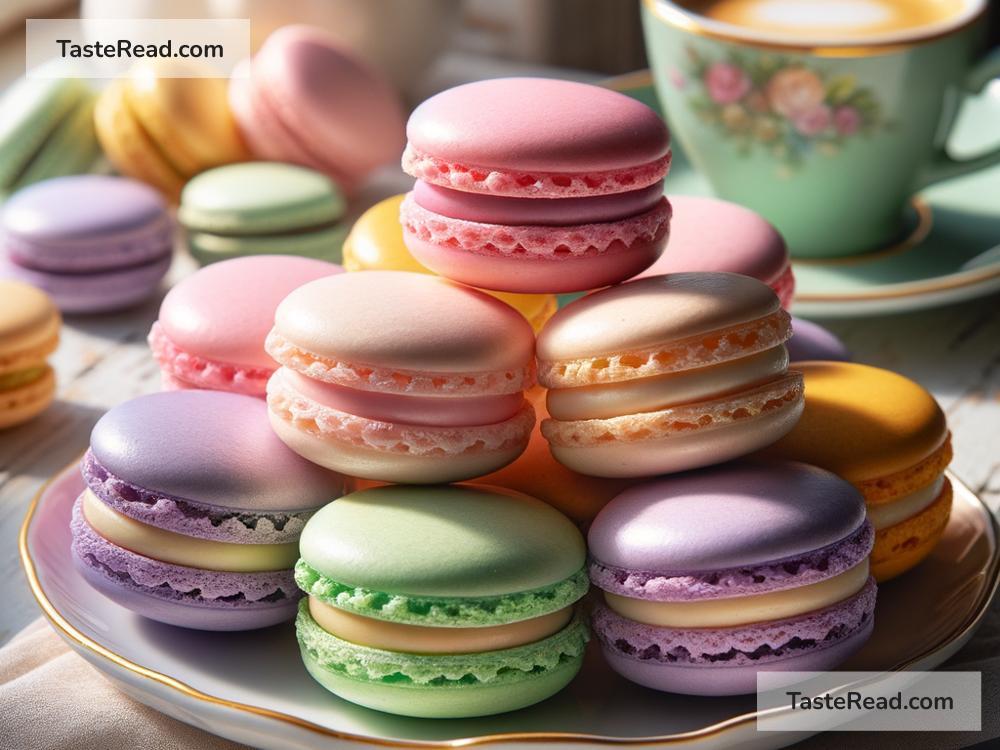The Story of the French Macaron: A Sweet Journey Through History
The French macaron is a small, colorful treat known for its crunchy shell and soft, chewy center. It comes in many flavors, like chocolate, pistachio, raspberry, and vanilla. But behind this delicate dessert lies a rich history that spans centuries and crosses borders. Today, we’ll take you on a journey to learn about the macaron’s origins, rise to fame, and why it became a global favorite.
The Humble Beginnings
Even though the macaron is now associated with France, it didn’t actually start there. Historians believe that the recipe was inspired by a dessert brought to Europe by Italian chefs in the 1500s. In 1533, Catherine de Medici, an Italian noblewoman, married King Henry II of France. Along with her, she brought Italian bakers to the French court, and they introduced the macaron to France.
In those early days, the macaron was different from what we know today. It didn’t have the colorful, sandwiched appearance. Instead, it was a simple almond-flour cookie made with egg whites and sugar. It was plain compared to the modern version but already popular because of its unique texture and nutty flavor.
The Evolution of the Macaron
For hundreds of years, the macaron remained a single almond cookie served without filling. It was in the 18th century that the macaron gained more attention, thanks to the Carmelite nuns in Nancy, France. These nuns baked and sold the cookies to support themselves during difficult times. The cities of Nancy and Versailles became known for making this dessert. To this day, Nancy celebrates its legacy with a festival dedicated to macarons.
The big change came in the early 20th century. Pierre Desfontaines, the pastry chef of the famous French bakery Ladurée, is credited with inventing the macaron as we know it today. He came up with the idea of taking two almond cookies and sandwiching them together with a layer of ganache or creamy filling. This small adjustment transformed the macaron into a delicate, elegant dessert. Ladurée also introduced different flavors and bright colors, making it an Instagram-worthy treat long before social media even existed.
The Secret to Success
What makes macarons so special? The answer lies in their balance of flavor and texture. A well-made macaron has a crispy shell that gently cracks under your teeth, revealing a soft, chewy center. The filling between the layers adds richness and moisture, completing the experience. The almond flour gives macarons their distinct nutty taste, while the flavoring in the filling ensures that every bite feels luxurious.
Macarons are notoriously tricky to make, adding to their charm. The batter requires precise mixing, careful piping, and perfect timing. Any mistake during baking — like a slight change in temperature — can ruin the texture. This level of difficulty gives the macaron an air of sophistication.
The Global Spread
Over time, the French macaron grew in popularity, crossing borders and becoming a worldwide sensation. Today, you don’t have to visit Paris to enjoy macarons; they are sold in bakeries and cafes across the globe. Chefs in different countries have adapted the macaron, creating unique flavor combinations, like matcha green tea in Japan or dulce de leche in Latin America. While the classic macaron remains a favorite, experimentation keeps the dessert fresh and exciting.
In the United States, macarons gained fame in the early 2000s. People fell in love with their bright colors and delicate structure. Many weddings, baby showers, and other celebrations feature macarons as decorative treats. In fact, some bakeries experiment by creating macaron towers that mimic traditional cakes!
A Few Fun Facts
-
Not the Same Thing as a Macaroon: Many people confuse macarons with macaroons. While the names sound similar, the two desserts are completely different. Macaroons are dense coconut cookies, while macarons are delicate almond-flour treats.
-
National Macaron Day: March 20 is celebrated as National Macaron Day! On this day, many bakeries offer free macarons to customers.
-
The Cost of Perfection: Macarons are among the most expensive cookies in the world. This is not only because of the high-quality ingredients but also because they take time and skill to make.
Why We Love Macarons
The French macaron is more than just a dessert. It’s a symbol of elegance, patience, and creativity. Its journey from Italy to France, and then to the world, shows how food connects cultures and evolves through time.
Whether you enjoy them as a treat with your tea or as part of a special celebration, macarons are a reminder that the smallest things in life can bring the most joy. Each bite is a mix of history, craftsmanship, and a touch of sweetness.
So the next time you see a box of colorful macarons, take a moment to appreciate their story. They may look small and delicate, but they carry centuries of tradition and care in every bite. Wouldn’t you agree that desserts with such stories are the best kind?


